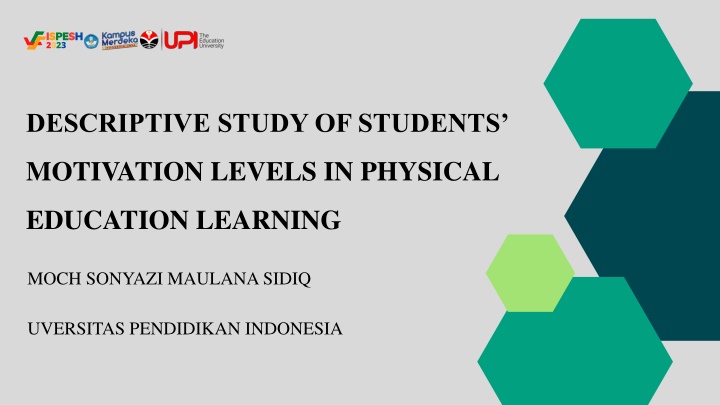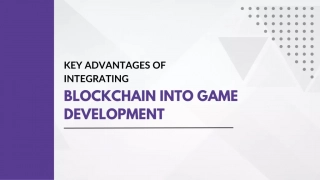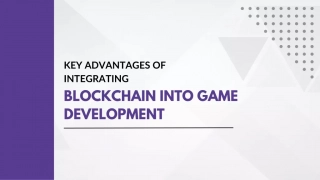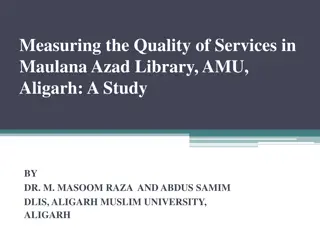
Descriptive Study on Students' Motivation Levels in Physical Education Learning
Explore the descriptive study conducted in ISPESH 2023 on students' motivation levels in physical education learning, highlighting the impact of intrinsic and extrinsic motivation factors. The study utilized a quantitative descriptive research method involving questionnaire surveys among high school students in Bandung. Discover key insights and findings on student motivation and its implications for physical education instruction.
Download Presentation

Please find below an Image/Link to download the presentation.
The content on the website is provided AS IS for your information and personal use only. It may not be sold, licensed, or shared on other websites without obtaining consent from the author. If you encounter any issues during the download, it is possible that the publisher has removed the file from their server.
You are allowed to download the files provided on this website for personal or commercial use, subject to the condition that they are used lawfully. All files are the property of their respective owners.
The content on the website is provided AS IS for your information and personal use only. It may not be sold, licensed, or shared on other websites without obtaining consent from the author.
E N D
Presentation Transcript
ISPESH 2023 DESCRIPTIVE STUDY OF STUDENTS MOTIVATION LEVELS IN PHYSICAL EDUCATION LEARNING MOCH SONYAZI MAULANA SIDIQ UVERSITAS PENDIDIKAN INDONESIA
ISPESH 2023 Physical education is the process of making a person in physical activities who gain growth and development that is carried out consciously in terms of cognitive, affective, and psychomotor aspects. Physical education, sports and health has the following benefits: providing self-management skills in efforts to develop and restore physical fitness and a healthy lifestyle through various physical activities and selected sports, increasing physical growth and better psychological development. Motivation has a very important priority in learning activities. Introduction There are several factors that can affect students' motivation to learn. This factor is divided into two, namely internal and external factors. Internal factors are factors that are in students such as physical condition, ideals/aspirations, student abilities and attention. The second is external factors, namely factors that are from outside the student such as the effort to learn students, learning facilities and the condition of the environment around the student (Rahmawati,2016).
ISPESH 2023 Students who actively participate and are motivated without any compulsion to participate in PJOK learning are higher than students who are not motivated. extrinsic motivation scores are greater than intrinsic motivation. The researcher is very interested in conducting research on & quot;Descriptive Study on Student Motivation Levels in Physical Education Learning". there are students who are less motivated in learning physical education, such as students who only attend a few meetings in physical education learning activities. Introduction
ISPESH 2023 Methods This study is a quantitative descriptive research The method used is a questionnaire with a data collection technique using a tiered scale, the score obtained from the questionnaire is then analyzed using quantitative descriptive which is expressed in the form of percentages. the population used was class X students at SMAN 12 Bandung which amounted to 360 people who were divided into 10 classes that participated in penjas. In determining the number of samples in this study, the Slovin formula was used and this sampling technique used a Random Sampling System with a sample number of 190. In this study, a questionnaire instrument was used. According to (Sugiyono, 2017.) A questionnaire or questionnaire is a data collection method that involves submitting a number of questions or written statements to respondents to be answered. This method serves to find out the extent of insight that students have about sports motivation in participating in physical education learning at SMAN 12 Bandung. In this study, a scale was adopted from a journal entitled "French adaptation and validation of the Sport Motivation Scale-II (Echelle de motivation dans les Sport-II) On that scale there were 18 statements.
Result ISPESH 2023 Variable Gender Mean Std. Devias i diffe rent Perse Uji T T - Hit Ket. Variab el Mea n Std. Deviati on Bed a Pers en Beda Uji T Ket. n Sig. differ ence T hit Sig. Std. School Data Mean % Min Max N Deviation Intrinsic Man 31,99 6,310 Not 0,02 5 0,40 4 2,5% 0,836 significa nt Woman 31,21 6,352 Intrinsi c 31,5 4 6,329 Man 31,57 51% 6,340 15 45 Not signific ant Exstrinsic Man 31,59 6,365 0,02 2 .1,07 6 0,28 2. SMAN12 Bandung 190 0.04 3 2,2% Not 4,3% 1,432 Exstrin sic 30,8 5 6,157 0,15 4 significa nt Woman 30,78 49% 6,148 15 45 Woman 30,30 5,967 Based on table 5, it can be seen that the intrinsic Based on table 4, it can be seen that the It can be seen that the motivation of students who dimension is obtained a significant value of significance value is 0.282 because the take part in penjas learning in class X at SMAN 0.404. Because the significant value > 0.05, Ho significance value > 0.05. So Ho was 12 Bandung has an average score of 31.57 for was accepted, in other words, the difference in accepted, in other words, there was no male students, and the motivation of students intrinsic motivation in male and female students significant difference between intrinsic and who take part in penjas learning in class X at was different but not significant. In the extrinsic extrinsic motivation in grade X students at SMAN 12 Bandung has an average score of dimension, the significant value is 0.154 which SMAN 12 Bandung. 30.78 for female students, with an average shows that the value > 0.05, then Ho is accepted. difference of 0.79 for the two, with a percentage This means that there is a difference in extrinsic of 51% for male and female students of 49%, a motivation between male and female students, difference of 2% and no significant difference. but it is not significant
ISPESH 2023 Discussion The results of this study show that there is a difference in motivation in the dimensions of intrinsic and extrinsic motivation in grade X students who take part in penjas learning at SMAN 12 Bandung. Because the intrinsic and extrinsic motivations in grade X students at SMAN 12 Bandung have differences but are not significant. This is in line with research conducted by Hendri and Aziz (2020) which states that intrinsic motivation higher than extrinsic motivation, Because The results are also in line with Weiss (2000) it can be stated that students who actively participate and are motivated without any compulsion to participate in penjas learning are higher than students who are motivated from Outside. There was no significant difference between the motivation of male and female students. In line with research conducted by Warhana, et al. (2023, p. 37) that there was no significant difference between learning motivation by male students and learning motivation by female students. This means that the level of motivation to learn is not influenced by gender. Both male and female students have the same opportunity to increase good learning motivation. In the dimension of intrinsic and extrinsic motivation in male and female students, the difference is not significant, This is in line with the results of research conducted by Bayyat (2020)
ISPESH 2023 Conclusion The students of class X at SMAN 12 Bandung who take part in penjas learning have different motivations. The results of this study showed that intrinsic motivation showed a higher level compared to extrinsic motivation but the difference was not significant. In general, the motivation level of male and female students does not have a significant difference in motivation. But in this penjas learning, male students have higher motivation compared to female students. In terms of intrinsic and extrinsic dimensions, the motivation levels of male and female students have differences, but the difference is not significant. However, in this penjas learning, male students have a higher level of intrinsic and extrinsic motivation than women, but the difference is not significant.
ISPESH 2023 References Abduljabar, B. (2011). Pengertian pendidikan jasmani. Ilmu Pendidikan, 1991, 36. http://file.upi.edu/Direktori/FPOK/JUR._PEND._OLAHRAGA/196509091991021- BAMBANG_ABDULJABAR/Pengertian_Pe njas.pdf Aenon, N., Iskandar, I., & Rejeki, H. S. (2020). Faktor Faktor Yang Mempengaruhi Rendahnya Prestasi Belajar Pendidikan Jasmani. Jurnal Ilmu Keolahragaan, 3(2), 149. https://doi.org/10.26418/jilo.v3i2.42965 Fadila, H. N., Heynoek, F. P., Kurniawan, R., &Amiq, F. (2022). Survei Motivasi Pembelajaran Pendidikan Jasmani Olahragadan Kesehatan Siswa Sekolah Menengah Atas(SMA) Negeri Se-Kota Malang. Sport Science and Health, 4(11), 1040 1048https://doi.org/10.17977/um062v4i112022p10 40-1048 Fajri, M. (2018). PELAJARAN PENJASKESKELAS X DI SMA SEKOLAH RAKYAT BABELAN BEKASI. IX(2), 93 106. Hamdu, G., & Agustina, L. (2011). PengaruhMotivasi Belajar Siswa Terhadap Pestasi Belajar Ipa Di Sekolah Dasar. Jurnal Penelitian Pendidikan, 12(1), 25 33. Lestari, D. F. (2021). Pengembangan ModelPembelajaran Aktivitas Jasmani Melalui Permainan Tradisional bagi Siswa SekolahDasar. Jurnal Pendidikan Jasmani, OlahragaDan Kesehatan Undiksha, 8(1), 7 12.https://doi.org/10.23887/jjp.v8i1.33742 Mudzakir, D. O. (2020). Pengaruh Permainan Olahraga Tradisional Terhadap Motivasi Dalam Pembelajaran Penjas Di Sekolah Dasar. Jurnal Maenpo:Jurnal Pendidikan Jasmani Kesehatan Dan Rekreasi, 10(1), 44 49. Rahayu, E. T. (2013). Strategi Belajar Mengajar Penjaskes. Depdikbud: Jakarta. Rahmawati, R. (2016). Faktor-Faktor Yang Mempengaruhi Motivasi Belajar Siswa Kelas X Sma N 1 Piyungan Pada Mata Pelajaran Ekonomi Tahun Ajaran 2015/2016. Jurnal Sin, T. H., & Hudayani, F. (2020). Studi motivasi siswa dalam mengikuti pembelajaran pendidikan jasmani olahraga kesehatan. SCHOULID: Indonesian Journal of School Counseling, 5(1), 30. https://doi.org/10.23916/08588011 Sugiyono, D. (2014). Metode penelitianpendidikan.





















